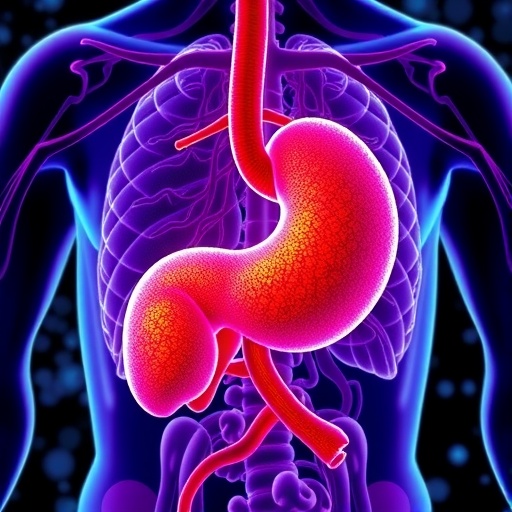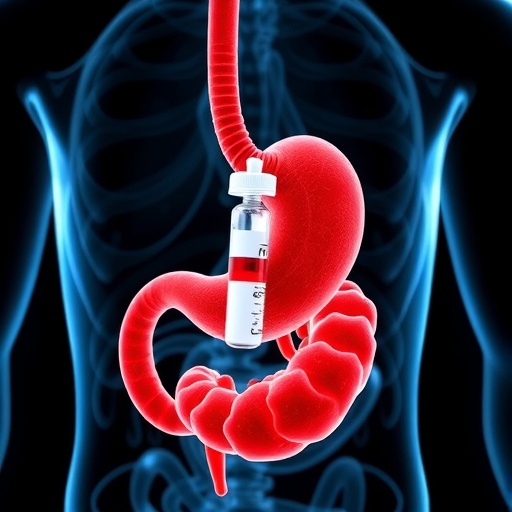
In a groundbreaking study published in Nature Metabolism, researchers have unveiled a compelling mechanistic link between hepatic gluconeogenesis, the metabolic enzyme pyruvate dehydrogenase kinase 3 (PDK3), and cancer cachexia, a lethal wasting syndrome observed in cancer patients. This intricate metabolic axis, characterized by heightened liver glucose production and PDK3 overexpression, has been demonstrated to drive systemic deterioration in both flies and mammalian models, shedding new light on the molecular underpinnings of this devastating condition.
Cancer cachexia represents a multifactorial metabolic disorder marked by progressive muscle wasting, fat depletion, and profound weight loss that cannot be reversed solely by nutritional supplementation. Despite its prevalence in advanced cancer patients, the molecular pathways contributing to cachexia have remained elusive, significantly limiting therapeutic options. The study led by Liu et al. delineates the pivotal role of liver metabolism, particularly the enhanced gluconeogenic flux and PDK3 induction, as a central driver of cachexia pathogenesis, transcending the species barrier from Drosophila melanogaster to murine models.
The liver’s role in systemic energy homeostasis is well-established, as it modulates glucose output to meet peripheral tissue demands. However, its contribution to cancer cachexia had not been fully appreciated. The current investigation utilized conditional genetic models and biochemical assays to demonstrate that tumors can remotely manipulate hepatic metabolism through endocrine signaling pathways, inducing an aberrant state of hyperactive gluconeogenesis. This metabolic reprogramming results in elevated circulating glucose and altered energy balance, precipitating downstream tissue catabolism.
At the molecular level, the study identifies a significant upregulation of PDK3 within hepatic tissue during cachectic progression. PDK3 is known to phosphorylate and inhibit the pyruvate dehydrogenase complex (PDC), thus diverting pyruvate away from oxidative phosphorylation toward gluconeogenic substrates. By intensifying PDK3 expression, cancerous conditions perpetuate a metabolic shift favoring glucose output over energy-efficient fuel oxidation, exacerbating whole-body energy mismanagement.
Intriguingly, the authors corroborated these findings by employing Drosophila cancer cachexia models, which recapitulated mammalian metabolic derangements and muscle wasting phenotypes. The evolutionary conservation of this metabolic circuitry underscores its fundamental biological importance and validates Drosophila as a robust platform for mechanistic studies. Furthermore, rescue experiments demonstrated that genetic or pharmacological attenuation of PDK3 expression mitigates cachexia severity, highlighting its potential as a therapeutic target.
The clinical implications of these findings are profound. By positioning hepatic gluconeogenesis and PDK3 activity downstream of tumor signaling as central mediators of cachexia, this research opens avenues for developing interventions that modulate liver metabolism to preserve muscle mass and improve patient outcomes. Currently, few treatments exist for cachexia, and they primarily provide symptomatic relief rather than addressing the underlying metabolic etiology.
From a biochemical perspective, the study provides comprehensive insight into the cross-talk between tumor-derived factors and hepatic metabolic enzymes. The data suggest that cancer-secreted cytokines or hormone-like molecules initiate signaling cascades that activate transcription factors governing gluconeogenic genes such as PEPCK and G6Pase, with concurrent PDK3 induction ensuring metabolic flux favors glucose production. This coordinated regulation appears to induce systemic catabolism by creating a metabolic environment hostile to muscle and adipose tissue maintenance.
Furthermore, the research integrates state-of-the-art metabolomic profiling, revealing systemic alterations in nutrient availability and energy substrate preference during cachexia. Elevated glucose levels paradoxically coexist with peripheral tissue energy starvation due to inefficient utilization, a phenomenon exacerbated by hepatic PDK3-mediated metabolic derangement. These findings deepen the understanding of systemic metabolic chaos in cachexia beyond simple energy deficit.
The translational potential of this work is underscored by experiments demonstrating that pharmacologic inhibitors of PDK3, administered to cachectic mice, reduce gluconeogenic rates and concomitantly attenuate muscle wasting. Such interventions prolonged survival times and improved physical activity measures, providing a proof of concept for targeting hepatic metabolism in cancer-associated cachexia management.
On a broader scale, this study contributes to the expanding field of cancer metabolism, exemplifying how tumor-induced systemic metabolic dysregulation contributes to comorbidities that severely impair quality of life and survival. It challenges the dogma of cachexia as a mere consequence of tumor burden, instead positioning it as an active, metabolically driven process orchestrated by tumor-host interactions.
The use of flies as a model organism enriches the study by allowing rapid genetic manipulations and high-throughput screening for additional factors in the cachexia cascade. The evolutionary conservation of key metabolic regulators between flies and mammals enables discovery of universal therapeutic targets, potentially accelerating translation to clinical applications.
In essence, Liu and colleagues mark a paradigm shift in understanding cancer cachexia, with their meticulous dissection of hepatic gluconeogenesis and PDK3 upregulation as central culprits. This new knowledge provides a framework for developing metabolic therapies that could alleviate muscle loss, improve cachexia prognosis, and ultimately enhance the lives of millions battling cancer worldwide.
As the promising therapeutic potential of targeting hepatic metabolism becomes clearer, future research will undoubtedly explore combinatorial approaches integrating metabolic inhibitors with existing cancer treatments. Such strategies hold promise not only for cachexia but also for overall metabolic health, potentially reducing cancer-related morbidity and mortality.
Moreover, the identification of reliable biomarkers linked to PDK3 activity and gluconeogenic flux may enable early detection of cachexia onset, allowing timely interventions before irreversible tissue wasting occurs. This proactive approach could transform current clinical practice by incorporating metabolic monitoring into routine cancer patient management.
In conclusion, this pioneering work elucidates a critical hepatic metabolic pathway commandeered by cancer to induce cachexia, revealing PDK3 and gluconeogenesis as linchpins in this deadly syndrome’s progression. The collaboration of metabolic and cancer biology disciplines exemplified here should inspire further integrative research efforts to unravel the complex tumor-host metabolic interplay.
Subject of Research: The molecular mechanisms by which hepatic gluconeogenesis and PDK3 upregulation drive cancer cachexia across species.
Article Title: Hepatic gluconeogenesis and PDK3 upregulation drive cancer cachexia in flies and mice.
Article References: Liu, Y., Dantas, E., Ferrer, M. et al. Hepatic gluconeogenesis and PDK3 upregulation drive cancer cachexia in flies and mice. Nat Metab 7, 823–841 (2025). https://doi.org/10.1038/s42255-025-01265-2
Image Credits: AI Generated
DOI: https://doi.org/10.1038/s42255-025-01265-2
Tags: experimental models for studying cachexiaglycemic control in cancerhepatic gluconeogenesis and cancer cachexialiver metabolism and energy homeostasismetabolic disorders in cancer patientsmolecular mechanisms of cancer cachexiamuscle wasting and fat depletion in cachexiaNature Metabolism cancer researchpyruvate dehydrogenase kinase 3 functionrole of PDK3 in cancer metabolismsystemic effects of liver glucose productiontherapeutic options for cancer cachexia





